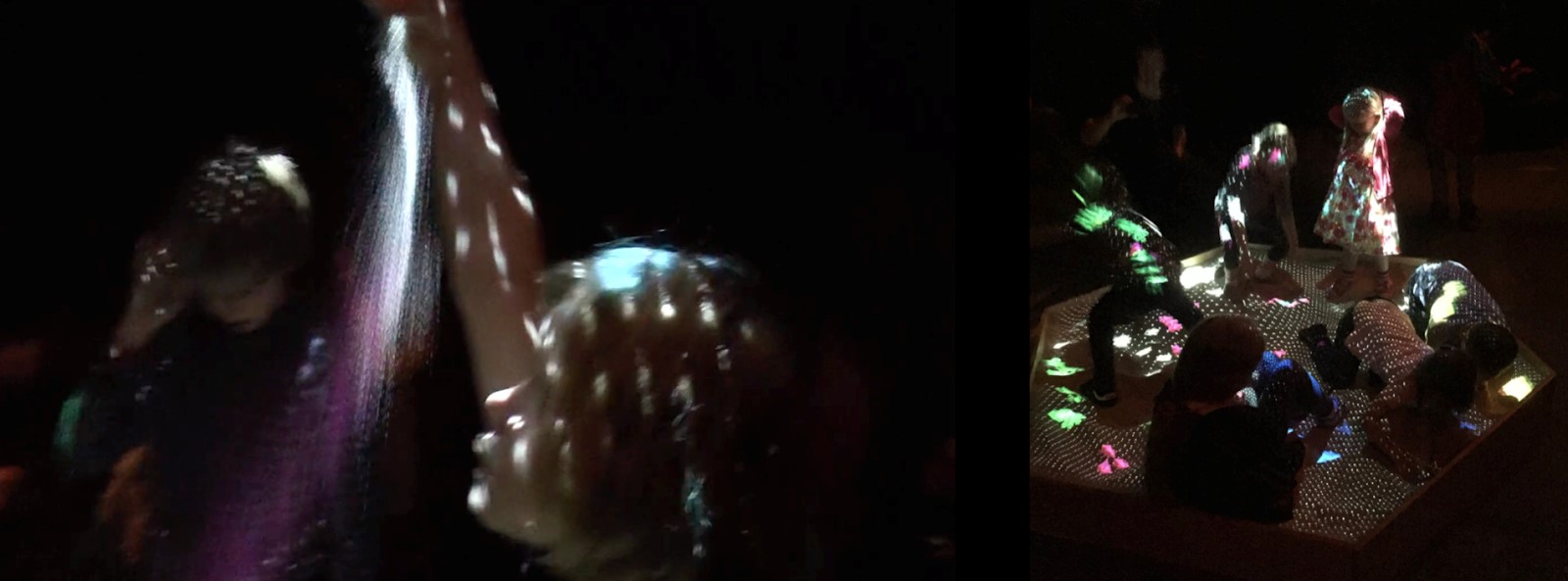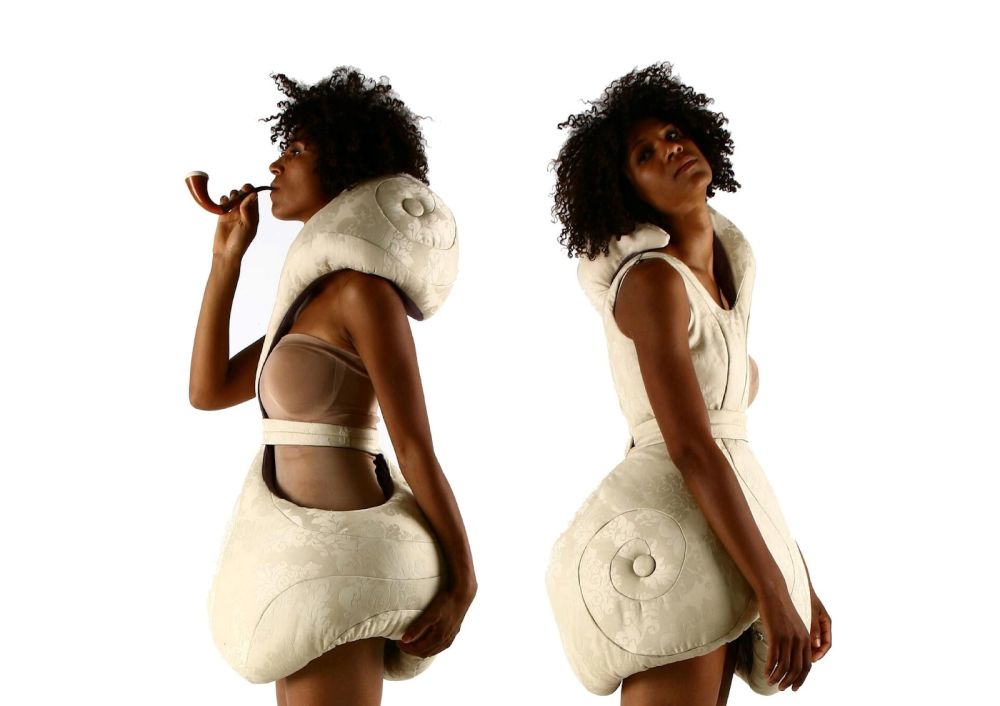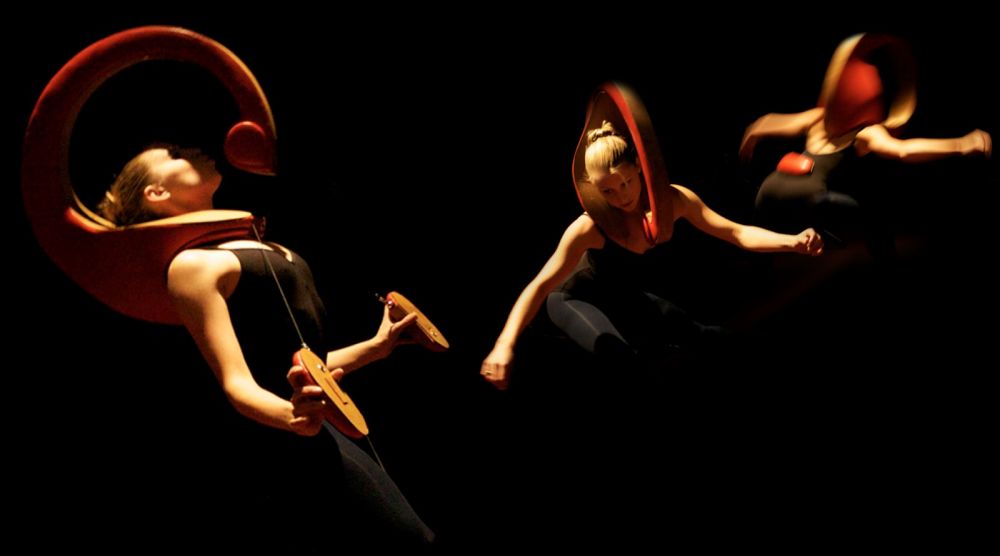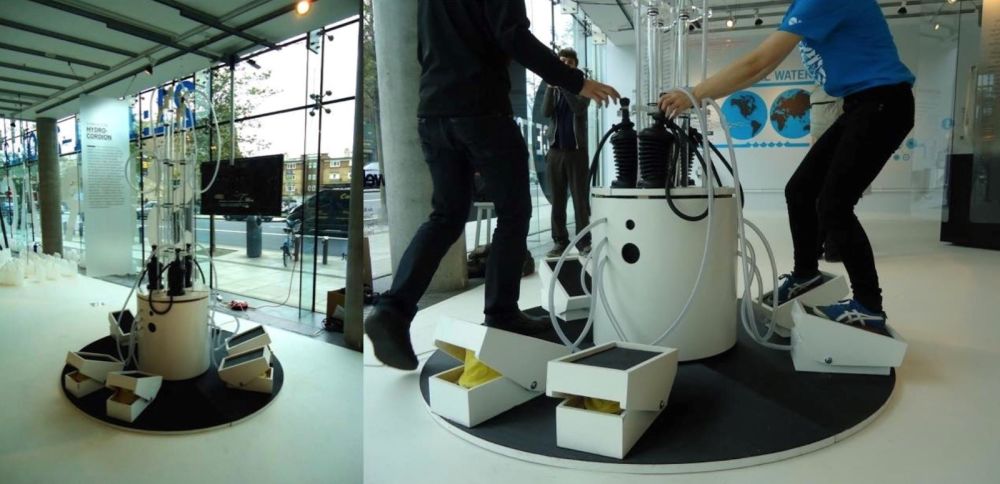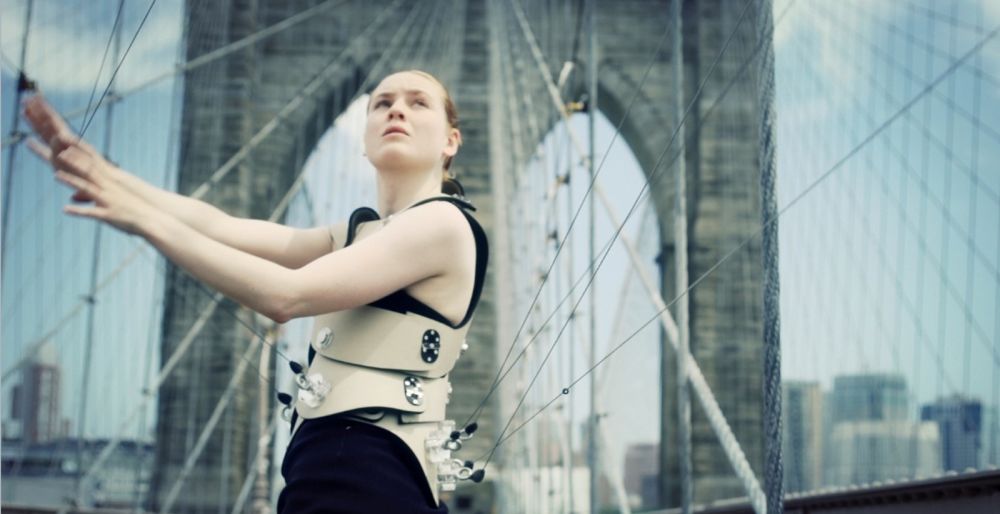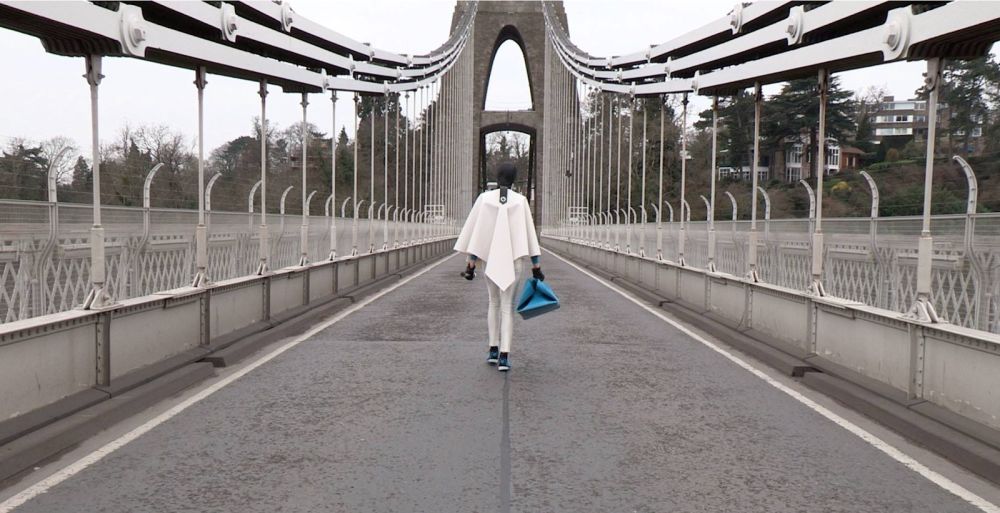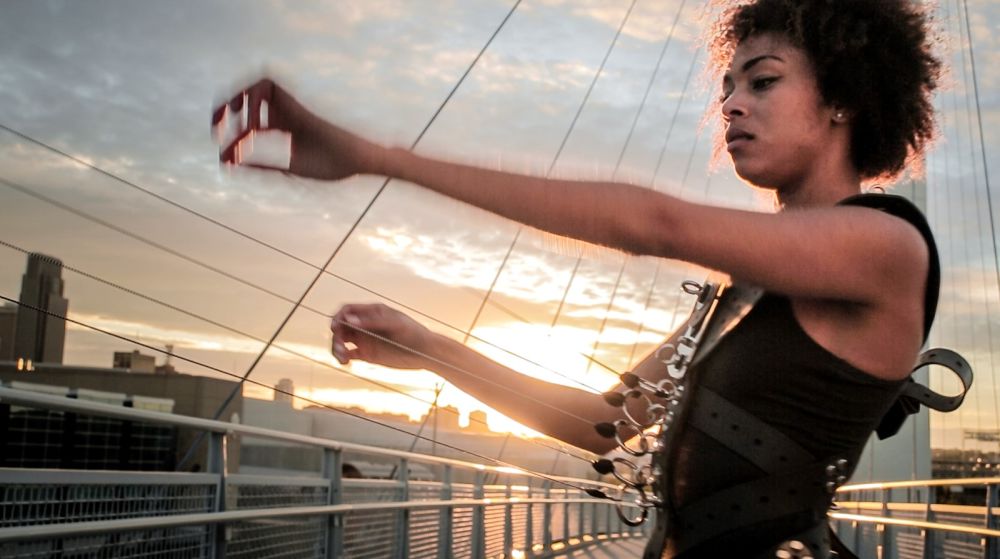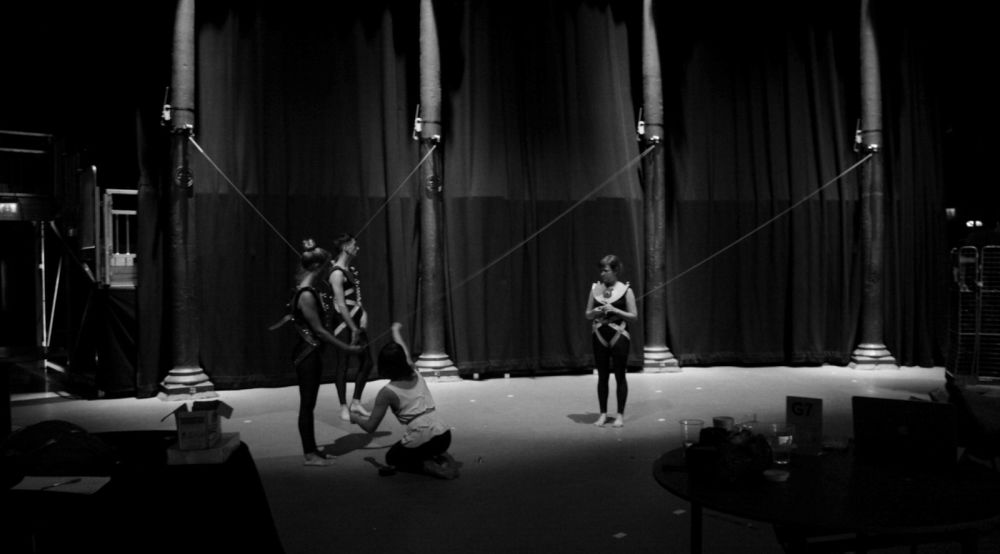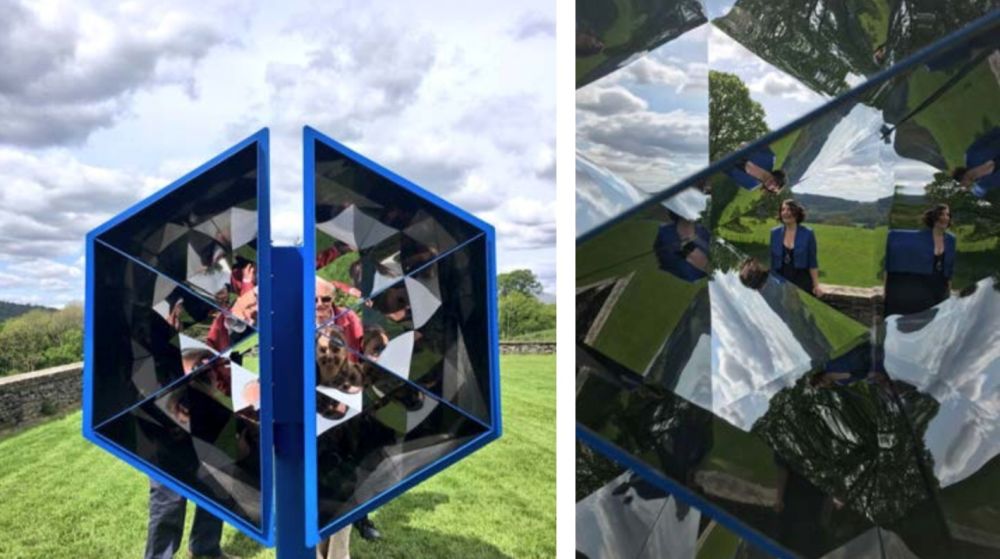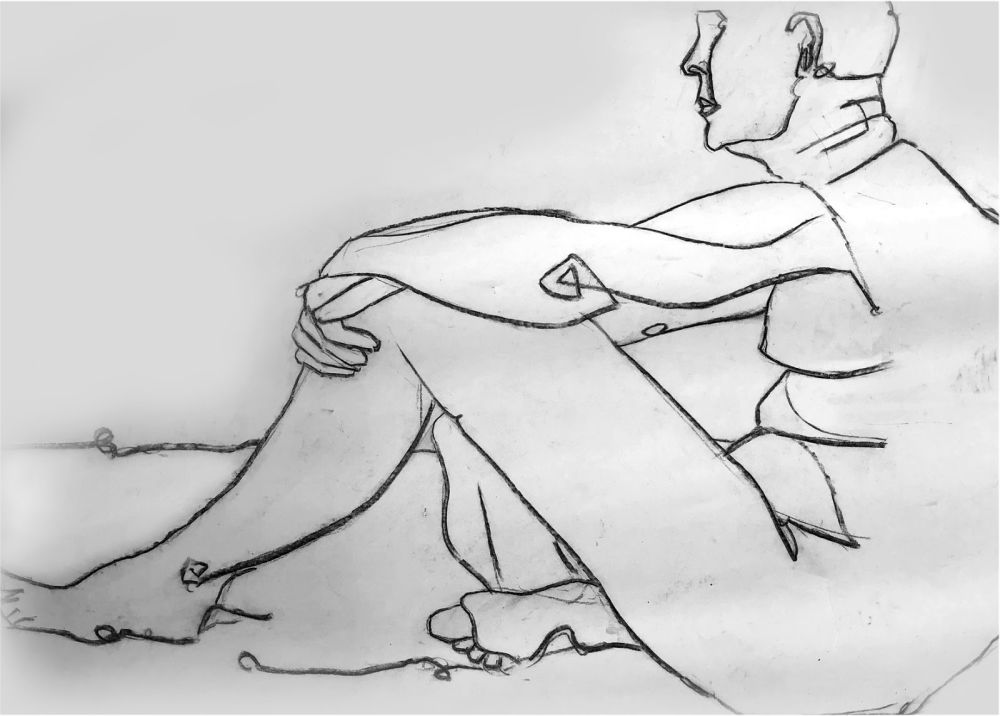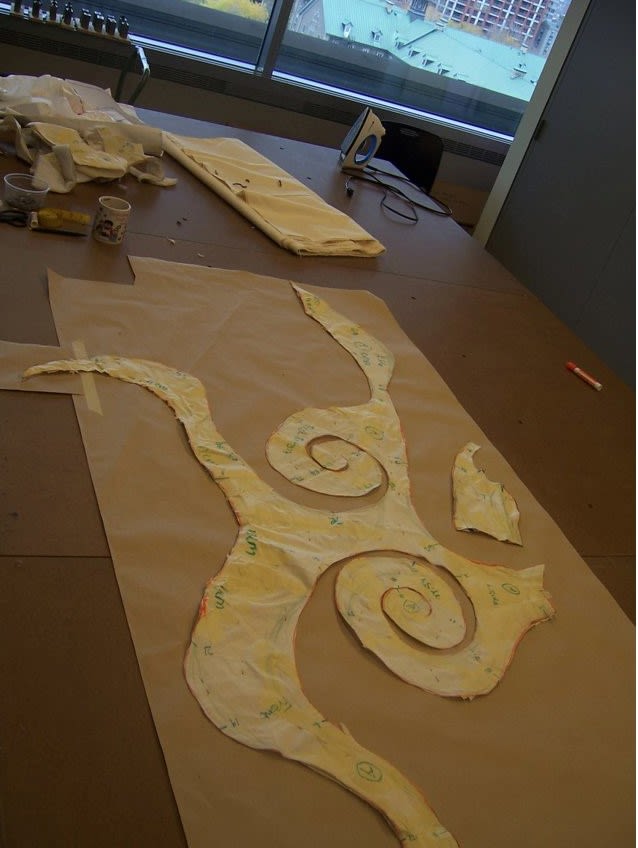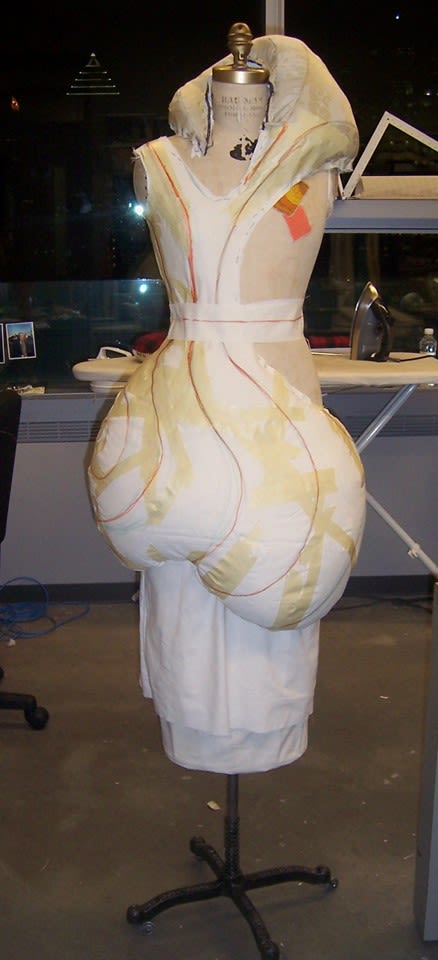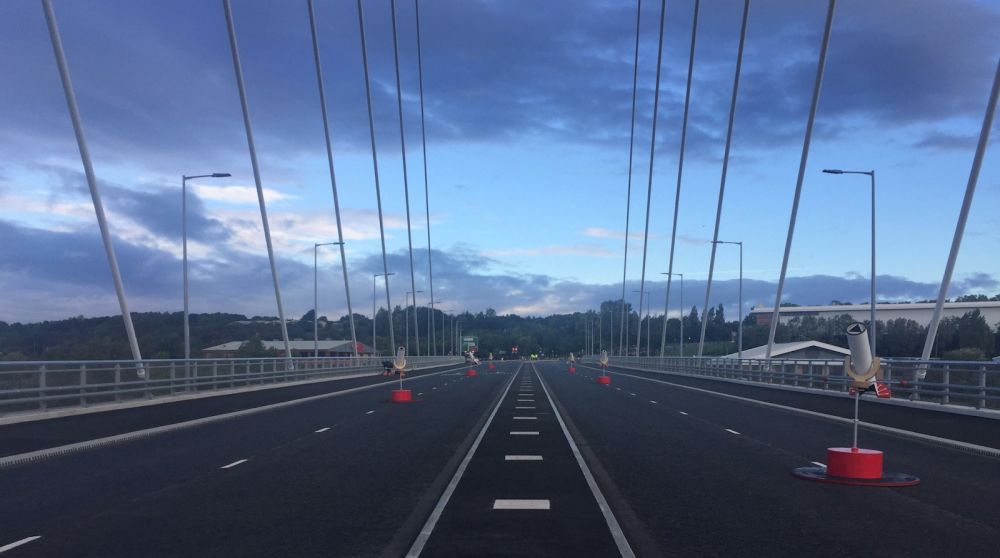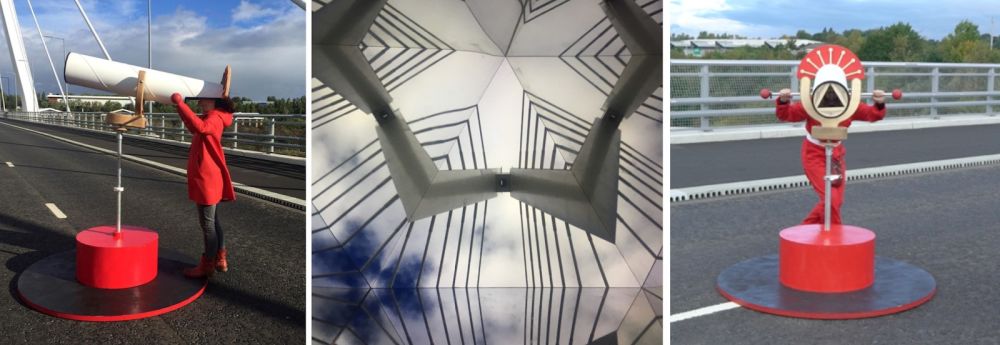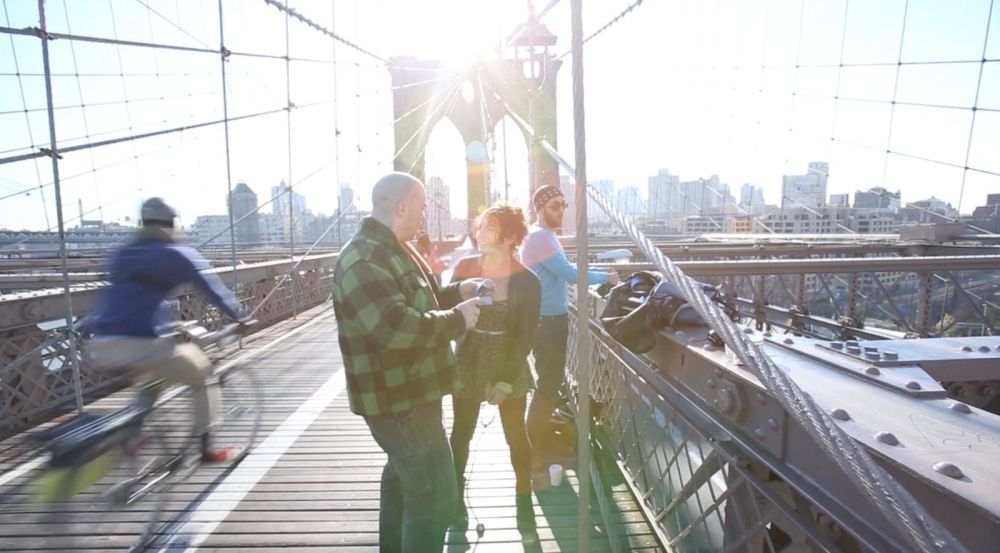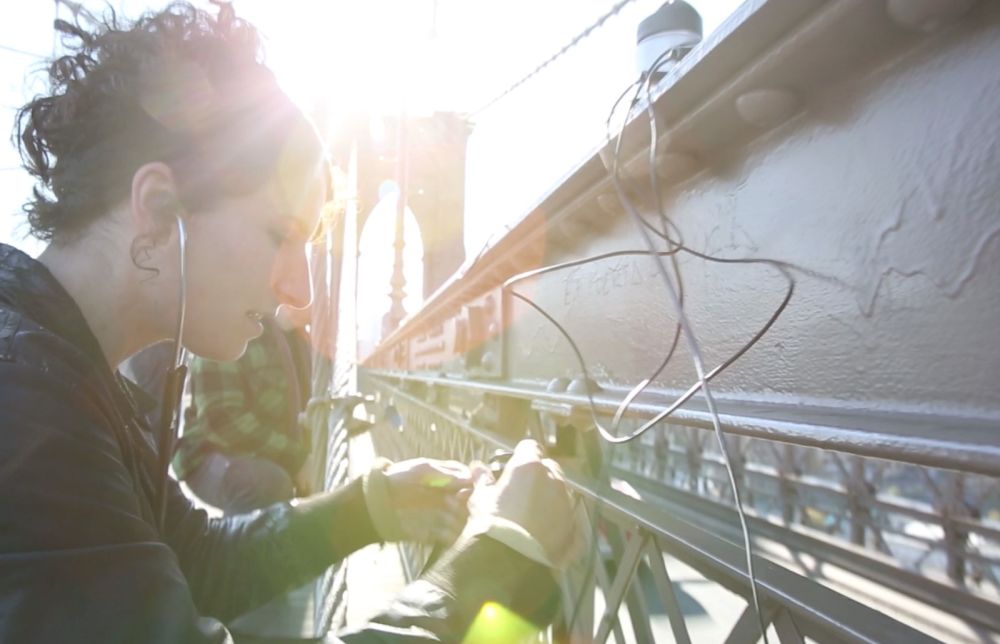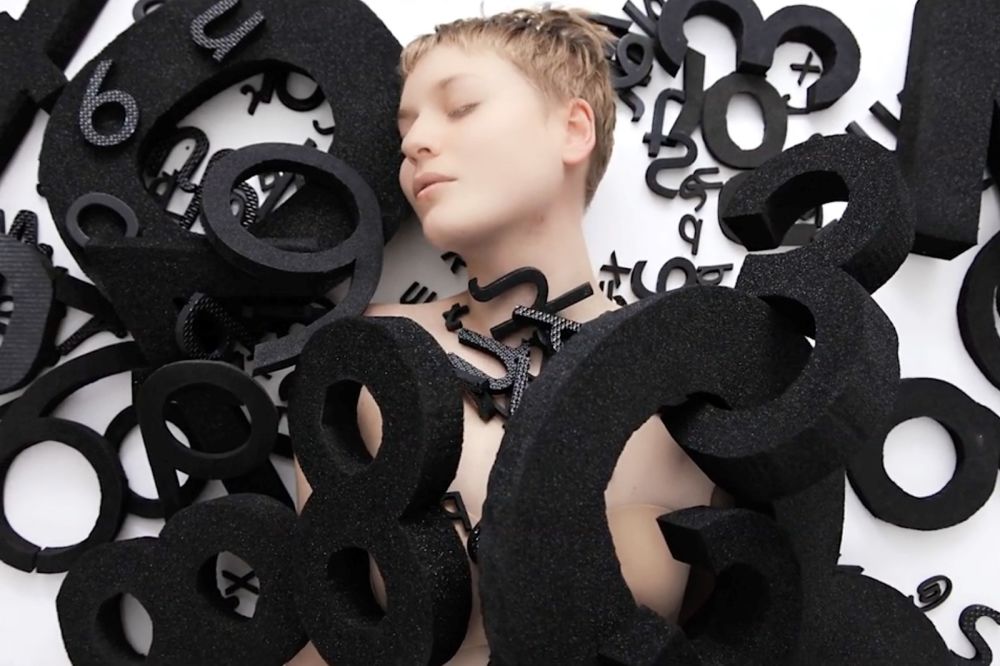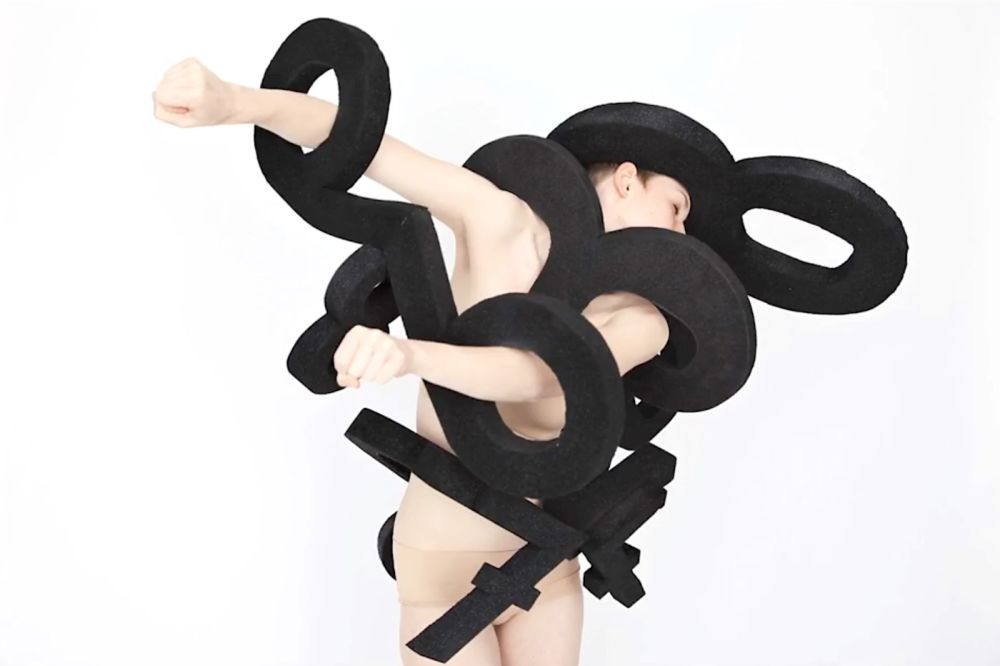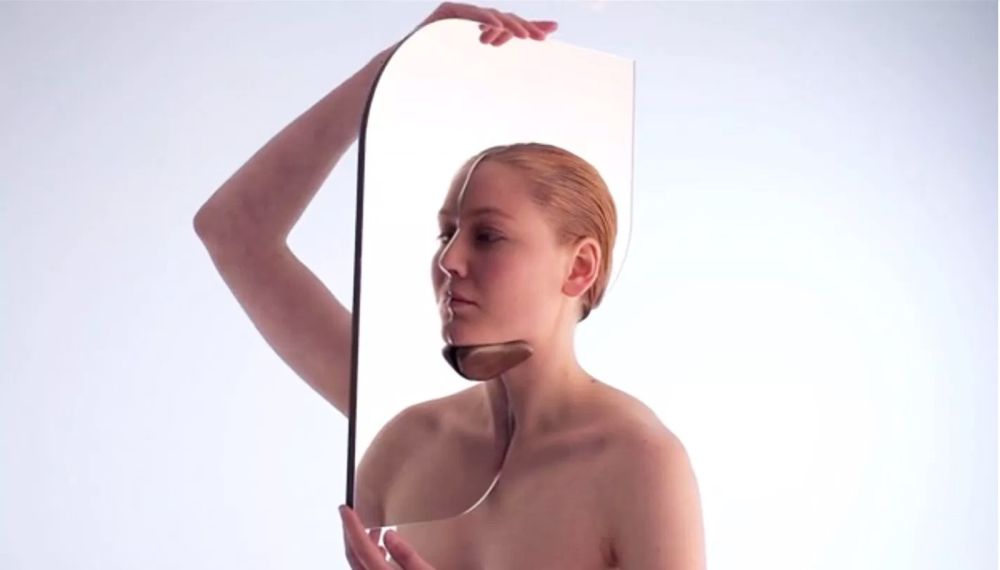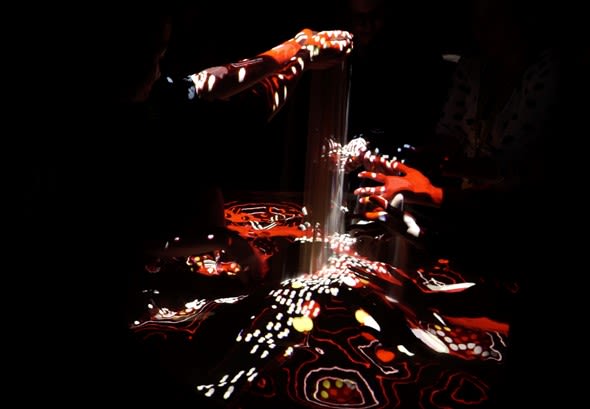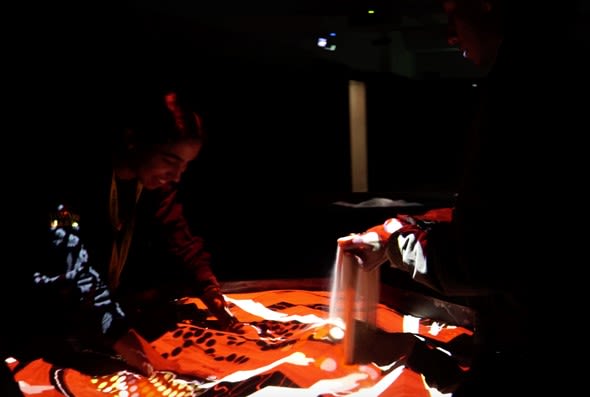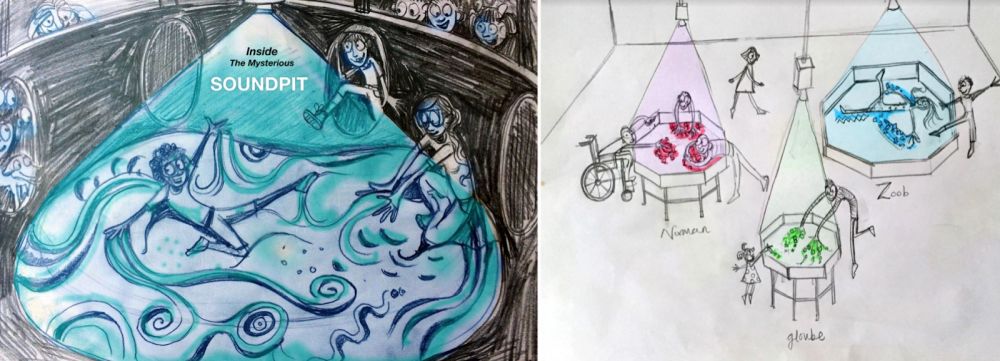Di Mainstone originally studied Fashion at Central Saint Martins (CSM), and her interest in the body and people has led to her current practice as an artist. Di’s work focuses on “transforming physical movement into sound via digital technology”, which you can see in Soundpit, her current exhibition at the Royal Festival Hall, where the audience can create sounds and visuals by playing with sand. We wanted to find out more about her inspirations for her work, and how she created a musical sandpit, so we sat down for a chat.

Hi Di, so first things first, why did you choose to study at CSM?
Many years ago, when I was doing my foundation course in Norfolk I remember hearing tales of the legendary Central Saint Martins. It seemed like a mythical place, far, far away. When I told my textiles tutor that I wanted to study fashion at CSM she suggested that I was not the right kind of student to apply. I ignored her comment and applied to CSM - focussing all my spare time on creating a new portfolio of work full of self-motivated fashion projects.

What is/are your fondest memories of CSM?
Oddly, a really happy memory for me was my interview at CSM. My Dad drove me to the Charing Cross Road campus and helped me navigate the maze of corridors with my giant portfolio, partially-zipped and spilling with a bizarre selection of projects. I clearly remember wearing an outfit that I had made myself and also the explosion of butterflies I felt as I was called into the room by Willie Walters and another lady with blond hair. The rest of the interview is blank except for one of the two casually saying that they liked my shirt on the way out (this blew my mind!). After the interview, I remember feeling high as a kite and took the opportunity to have a good snoop around mysterious Soho before my Dad picked me up!
I quickly discovered that CSM fashion design BA was not just about running around Soho in mad outfits - elements of the course were intensely challenging. This said, no matter what difficulties the week threw at me, I found that I could always seek refuge in life drawing classes with our inspirational illustration tutor Howard Tangye. He encouraged me to throw my paper onto the floor, grab some charcoal and lie on my belly to create an exaggerated perspective of the subject (giant feet and a tiny head!). This fascination with perspective influenced my final collection and I still enjoy Howard’s style of floor-drawing to this day!
Another one of my favourite classes was pattern cutting. One female tutor taught me to sculpt around the body - encasing the mannequin with paper and masking tape to create the shape I wanted and then to transfer this pattern onto the fabric. I have used this technique ever since when making my body-sculptures and wearable musical instruments.
Finally, my strongest memory of CSM was when one of my fashion heroes Hussein Chalayan tutored us. He gave us a project where we were to create outfits inspired by stories that we had written. I remember writing a poem and making a dress inspired the narrative and getting my all-time best mark. I still use narrative-driven design in my artwork today.
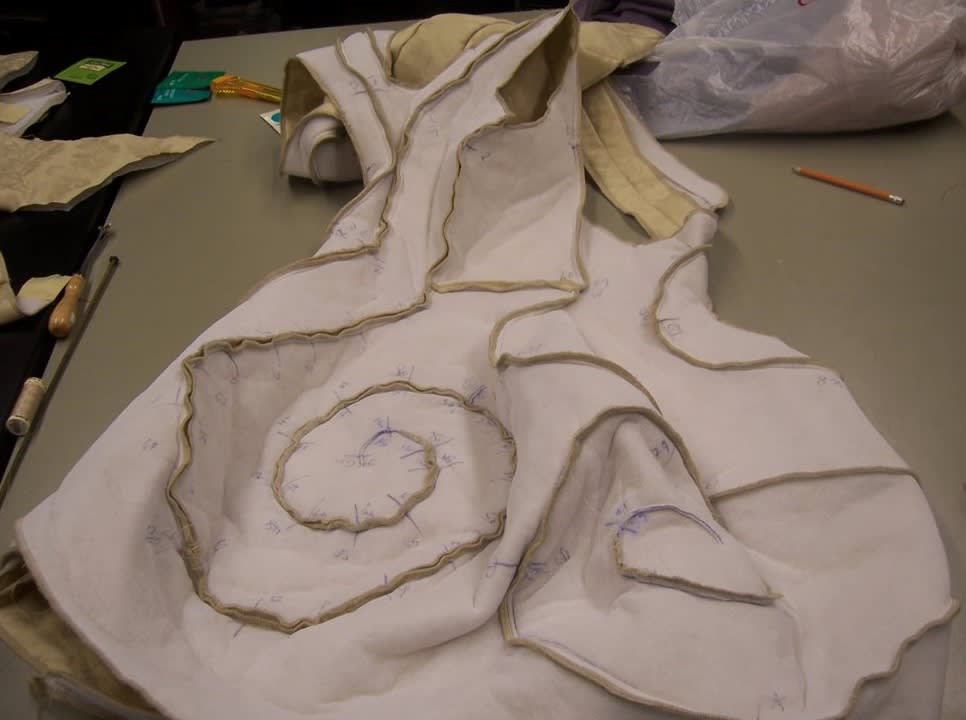
You originally studied Fashion, and your work now focuses on ‘transforming physical movement into sound via digital technology’; have you always been interested in people/ the body?
Yes, I think a natural fascination in the body and people is directly connected to my early love of fashion - the three elements are intertwined. I also have a love of dance and this comes with a strong sense that clothing is not just a shell to protect you from the elements or to reflect your identity but it is also something that you move in. To me, this was the most interesting thing to investigate when I left the fashion industry to explore my new-found love of technology. I started by embedding motion sensors into wearable items that could track the way you move through space and worked with dancers, musicians and coders to transform the physical movement into sound. Over time these wearable musical instruments became more abstract and began to look less like clothing and more like body-centric sculptures or sonic prosthetics. I started to call the wearers of these sonic-devices “movicians” - part mover part musical instrument. I called the process of developing the instruments body-centric design and used many of the skills that I learned at CSM in this new creative laboratory environment.

How did you move from fashion to sound sculptures?
I worked as an illustrator for newspapers when I first left CSM and then used that portfolio to get my first fashion design job for an independent label called Soochi. It was a brilliant adventure, where I learned to design garments, create prints on fabric, manufacture and sell the work. After five years I decided to leave the Soochi largely because the landscape was changing - small independent labels were being gobbled up by high-street giants. I remember wondering what the future of the industry would be. I decided to find out for myself and started collaborating with engineers and scientists - exploring how technology might influence the fashion industry in the future. In 2004 there weren’t many labs or academic spaces exploring interactive fashion and textiles and so I left the UK and embedded myself in a range of experimental future labs around the world; The Banff New Media Institute in Canada, X-S Labs in Montreal, Eyebeam Centre for Art and Technology in New York, V2 Institute for the Unstable Media in Rotterdam and many more. I found that the way I could get paid to make more of these body-centric instruments was by doing artist residencies in these labs, and so I became an artist as well as a designer.

Tell us about some of the projects/collaborations that you have undertaken since graduating?
Here are a few examples of some of the collaborative projects that I have worked on over the past decade:
Skorpions kinetic costumes (2006-8)
One of my early experiments into wearable technology was a collaboration with researcher Joey Berzowska at XS Labs in Montreal. Joey’s lab explored the realm of interactive textiles and we decided to make a collection of kinetic costumes that moved of their own accord. We embedded an alloy called Nitinol into the fabrics that would contract when a current passed through it - and so they would move and spasm in a quite creepy way!
Wearable musical instruments (2009 - 13)
Over a number of years, I collaborated with Queen Mary University of London’s Media Arts and Technology group and Centre for Digital Music to develop a series of body-centric wearable musical instruments called Serendiptichord, Whimsichord and Hydrochordion which went on to be showcased at different venues internationally.
Human Harp (2013-16)
Supported by Queen Mary University of London, Arts Council England, Sennheiser, Roundhouse, ESPRC, Bloomberg
One of the most successful projects that I worked on was called Human Harp. It involved a wearable musical device that connected the user to the cables of a suspension bridge and enabled them to play it like a giant harp! This project seemed to pique the public’s curiosity and proceeded to go viral receiving international media attention including the New York Times, New Yorker, CBC, Observer and many more.
Time Mirror (2018)
Commissioned by Lakes Ignite and Blackwell Arts and Crafts House
Time Mirror is an interactive sculpture, made from polished steel that reflects Blackwell’s dramatic Lake District surroundings. The piece allows audiences of all ages to experience and capture the cultural landscape in an experimental and abstract way. Time Mirror is ‘Blackwell Blue’ inspired by the colour blue of the peacock frieze and tiles inside Blackwell as well as the artist Yves Klein.
Collaborative Projects
Your current exhibition Soundpit is on at the Royal Festival Hall, can you tell us a bit about it?
Soundpit is an immersive installation, where the audience gets the chance to create sounds and visuals by playing with sand. Visitors are invited into a long dark room in the basement of the Royal Festival Hall to play in giant sandpits illuminated by beautiful graphics, creating music with their own movements. Soundpit is about the convergence of three of the senses - sound, vision and touch. Through play, you can explore the effect this sensorial mix has on your thoughts, mood, creativity and wellbeing.
Soundpit came about because I was curious about the phenomena of synaesthesia which is when a sensation in one of the senses triggers a sensation in another. I wanted to see if we could create a musical machine that would allow people to see and touch sound as well as hear it. Sand seemed to be the perfect tactile interface.
Obsessed with finding a way to make music with sand, I found a golden opportunity when I was awarded the Artist in Residence position for the European City of Science, Manchester 2016. A cross-disciplinary team was formed and Soundpit was developed in a live laboratory during Manchester's Science in the City festival, with input from musicians, coders, neuroscientists and members of the public. The final Soundpit installation was shown during Manchester Science Festival at the Salford University's Science Jam.
The second version of Soundpit was developed with the National Science and Media Museum in Bradford with curator John O'Shea and producer Kate Davies as part of their Supersenses exhibition. Concepts for new Soundpit characters were developed through collaborative workshops with groups of school children, supported by Arts Council England.
Southbank Centre has brought previous iterations of Soundpit exhibited in Salford and Bradford together to the Royal Festival Hall. To celebrate this installation, the team developed a new original Soundpit character called Pangra to join the Soundpit family. Inspired by Southbank Centre’s resident Gamelan (a Javanese percussion orchestra), we have created original sounds and visuals for a new soundpit - which opened for the Imagine Children's Festival 2019 at the Southbank Centre.
I see Soundpit as a body-centric musical instrument - one that moulds and moves with your body as you trail your hands through the sand or lie down and wave your arms like a sand angel - you should definitely try this for yourself by the way, in our giant new dune pits.

Soundpit has already been shown in Manchester and Bradford before coming to London, what has been your favourite reaction to it so far?
My favourite reaction was during the Soundpit installation at the National Science and Media Museum in Bradford. An octogenarian couple would visit regularly during the afternoon and were often seen taking their shoes and socks off, rolling up their trousers and playing in the large floor pit.
Di Mainstone's Soundpit
Meet Gloube, part of the interactive installation Soundpit created by artist Di Mainstone currently on
What is next for Soundpit, and for you?
Excitingly Soundpit is due to head to Sydney’s Museum of Applied Arts and Science in 2020. We are currently in the throes of designing the layout and structure of the pits and plan to work with local musicians in Sydney as well as my current collaborator's, musicians Architects of Rosslyn and creative technologists Wetgenes to develop new Soundpits for the museum.
This year I have an exciting new art commission taking place at a significant London landmark - I will update you as soon as I am allowed to talk about it!
Visit Soundpit
Soundpit is on until 2nd June 2019 (except 12th May) at the Royal Festival Hall, Exhibition Space, Level 1.
Find out more about Di:
- Visit her website: dimainstone.com
- Follow her on Instagram
- Follow her on Twitter
